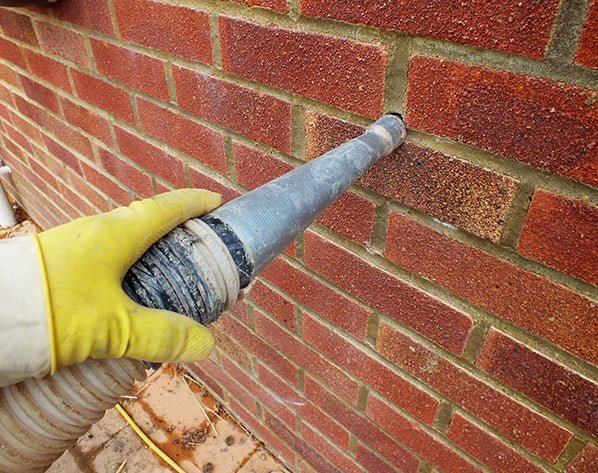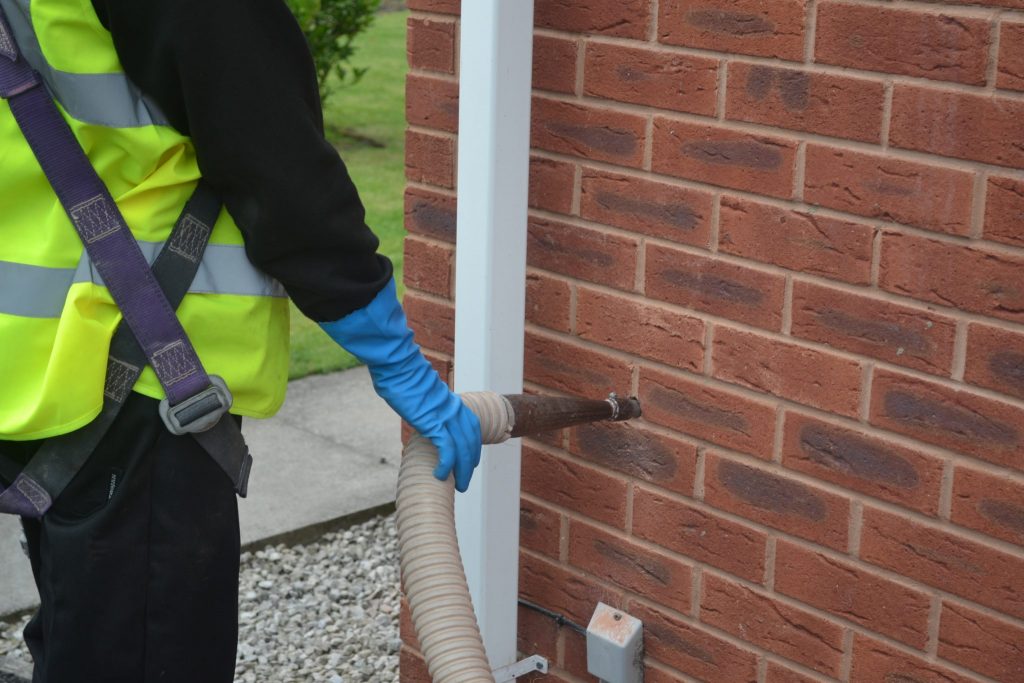Cavity Wall Extraction
Cavity wall insulation was first introduced during the 1970s, becoming compulsory in the 1990s for all new UK buildings. As there was no governing body to regulate the cavity wall insulation industry before 1995, this gave the potential for poor workmanship.
If cavity wall insulation has been professionally installed to a high standard and the building is well maintained, the insulation should last a very long time. However, old materials used in the past can have poor thermal conductivities in comparison to newer materials of today.
Ecosave can extract your old cavity wall insulation and install the very latest technology in cavity wall Insulation!
And the good news is, You may be entitled to funding for the installation part of the process!
As weather conditions have become more severe, buildings that have not been maintained to withstand such conditions can experience issues with dated insulation techniques where water penetration causes the insulation to get wet This breaks down the properties of the insulation with the moisture retained within the cavity and as the moisture is retained in the insulation, it can travel across into the inner walls forming as damp.
Ecosave Installations Ltd provide a full, end to end in-house service that covers initial enquiry, home assessment, installation, and aftercare.
When the right material is correctly installed, cavity wall insulation will help your home stay warm, safe, and energy-efficient, however, cavity wall insulation can cause penetrating damp, mould and condensation if:
- It’s old and worn
- It was installed incorrectly
- Your home is in a high exposure area
- The cavity was not clear before the insulation was installed
- The structure of your home is not suitable for cavity wall insulation
- You have damaged walls such as cracks in the brickwork, render or pointing
- Blockages have entered the cavity because of building works or home improvements
Some of the issues above can occur because:
- Gaps in the insulation allow heat to escape and damp to penetrate
- If the insulation gets wet it will act as a sponge, drawing water across and holding it against your walls
- The insulation can prevent adequate ventilation and cause damage to, for example, a steel frame, suspended wooden floors and wall ties
- It may take a few years before you notice anything but damp could still be damaging your walls before it becomes obvious. It’s likely your energy costs will be rising too, as your heating will have to work harder to maintain a comfortable temperature.
Leaving adequate cavity wall insulation in place can have devastating effects and may:
- Reduce the value of your property
- Can cause major structural problems
- Reduce heat retention and increase fuel consumption
- Make your walls wet inside and out
- Affect your health
Grants For Cavity Wall & Loft Insulation.
Why Remove Cavity Wall Insulation?
Cavity Blockages
Debris that has fallen into the air-space (cavity) can create a platform for moisture to travel across and penetrate the vertical layer resulting in damp and sometimes the formation of fungi and mould growth visible on the inner side of the exterior walls. Debris/obstructions can also build up at the bottom of the Cavity and allow moisture to transmit upwards through the obstructions also resulting in damp.
It’s absolutely essential that the cavity must be free of significant blockages such as debris and rubble. Since the inception of cavity wall construction, properties have been identified as having minor and sometimes major blockages/obstructions within the cavity.
The causes for these obstructions can include:
When the property was constructed, the cavity was not cleared correctly prior to completion
Alterations to the propertyi.e. extensions, walls removed, wall tie replacements etc.
Cavity exposure – normally through window / door replacement or conservatory installation
General improvements / repairs – fitting of balanced flue boiler systems / vents being installed
Replacement of wall ties allowing inward motion of debris / rubble into the cavity
Other reasons to remove cavity wall insulation are if the property has been flooded or has had fire, escape of water, subsidence or impact damage.
Ecosave will fully inspect the insulation to report on what damage has occurred. Should the removal of insulation be recommended, we extract the material and re-install using EPS Bead, complying to current Building Regulations and comes with a CIGA backed 25-year guarantee
All our staff are fully trained and experienced in Cavity Wall Extraction and insulation and hold all the necessary certifications.
What are you
waiting for?
The cavity extraction process
The redundant or defective Cavity Wall Insulation is removed by blowing compressed air into the cavity while an industrial vacuum machine collects the waste insulation from the bottom of the wall through strategically removed bricks.
The removal of material commences at the base of the property, working its way up the drilling pattern checking that the entire cavity wall is free from insulation material. All waste material is bagged during the extraction process and all waste materials are removed from site for safe disposal. Before leaving your property, Ecosave will ensure that any remedial work is completed to your satisfaction and your property is left clean and tidy.
Following the extraction of the redundant/defective insulation the cavity void is inspected and photographed using a borescope to ensure the cavity insulation is completely removed


